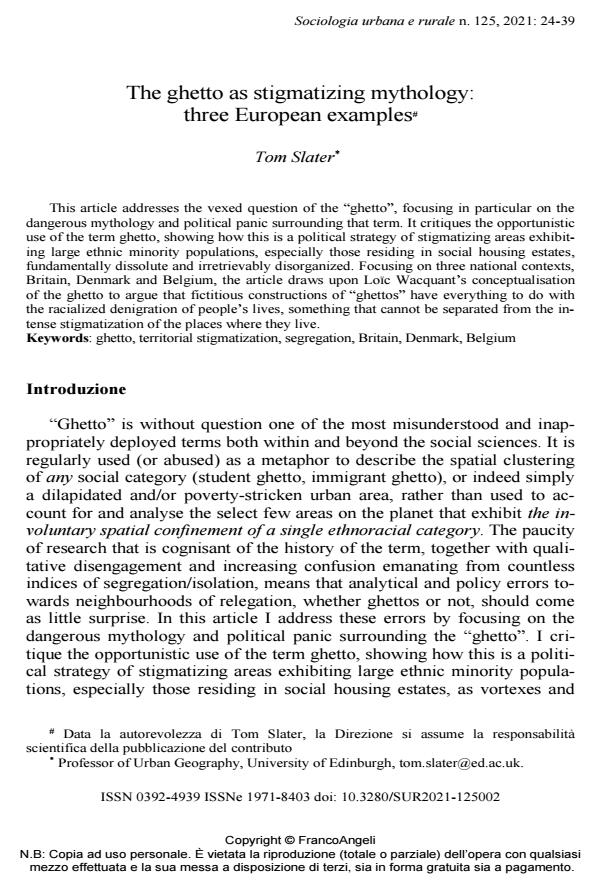The ghetto as stigmatizing mythology: three European examples
Journal title SOCIOLOGIA URBANA E RURALE
Author/s Tom Slater
Publishing Year 2021 Issue 2021/125
Language Italian Pages 16 P. 24-39 File size 302 KB
DOI 10.3280/SUR2021-125002
DOI is like a bar code for intellectual property: to have more infomation
click here
Below, you can see the article first page
If you want to buy this article in PDF format, you can do it, following the instructions to buy download credits

FrancoAngeli is member of Publishers International Linking Association, Inc (PILA), a not-for-profit association which run the CrossRef service enabling links to and from online scholarly content.
This article addresses the vexed question of the "ghetto", focusing in particular on the dangerous mythology and political panic surrounding that term. It critiques the opportunistic use of the term ghetto, showing how this is a political strategy of stigmatizing areas exhibit-ing large ethnic minority populations, especially those residing in social housing estates, fundamentally dissolute and irretrievably disorganized. Focusing on three national contexts, Britain, Denmark and Belgium, the article draws upon Loïc Wacquant’s conceptualisation of the ghetto to argue that fictitious constructions of "hettos" have everything to do with the racialized denigration of people’s lives, something that cannot be separated from the in-tense stigmatization of the places where they live.
Keywords: ghetto, territorial stigmatization, segregation, Britain, Denmark, Belgium
- De-stigmatizzazione territoriale e pratiche di commoning. Il caso del quartiere romano del Quarticciolo Matteo Cerasoli, Francesca Messineo, Gwon Son, in SOCIOLOGIA URBANA E RURALE 136/2025 pp.29
DOI: 10.3280/SUR2025-136004
Tom Slater, The ghetto as stigmatizing mythology: three European examples in "SOCIOLOGIA URBANA E RURALE" 125/2021, pp 24-39, DOI: 10.3280/SUR2021-125002